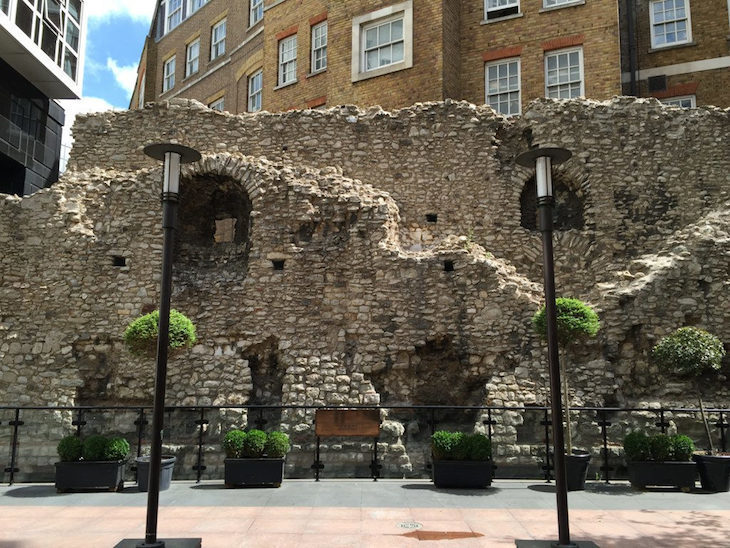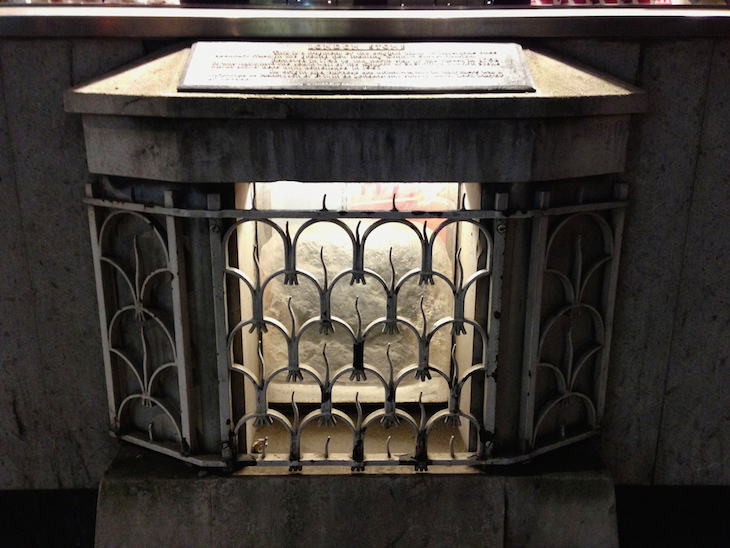
With over 8 million people populating modern London, it’s hard to imagine the city almost 2,000 years ago when it (Londinium) became the Roman capital of Britannia, with only 60,000 residents.
But you can still catch glimpses of London’s rich, romantic and sometimes downright gruesome history in the streets you walk down everyday. And to prove it, we’ve picked three London bus routes that’ll give you an eye-full of our city’s incredible past for no more than the cost of your fare.
Ride along the ancient London Wall
When the number 100 bus weaves its way from Shadwell to Elephant & Castle, it passes lots of historical sites along the way. Jump on the bus at Tower Gateway to see the remains of what used to be London’s surrounding wall, covering the distance between Tower Hill and Blackfriars. The wall was built between 190 and 220 AD using ragstone carried by boat from Kent. There are quite a few remains of this wall left to see.

The bus then more or less follows the length of the wall, crossing over Bishopsgate, where one of the city’s seven gates was located. The gate no longer exists, but if you look above Boots chemist at Heron Tower, you’ll see a Bishop’s Mitre in the stonework, marking the spot of the original gate.
To get a closer look at the wall, jump off at the Museum of London and head down Noble Street. This part of the wall was revealed following an air raid in 1940. There’s also a surprise part of the wall hidden in an underground car park under the museum.

A Roman history tour isn’t complete without mention of wild animal fights or public executions, so head down to Guildhall Art Gallery, just off Gresham Street, to discover a huge 7,000 seat amphitheatre where all that nastiness would have taken place (free entry).
Romance, gunpowder plots and a mysterious stone
Let the number 15 bus take you on a tour of romance, mystery and anarchy (and no, we’re not talking about passengers on the night bus).
Start your journey at Minories, near Tower Hill. Minories gets its name from an Abbey that stood further north up the road, called the Abbey of the Minoresses of St. Mary of the Order of St. Clare. Thankfully, they had the good mind to shorten it. It was established in 1293 by Edmund ‘Crouchback’, brother to Edward I, to house a group of nuns that his wife had brought over from Spain. What a lovely surprise that must have been for him.

Blink and you’ll miss it, but embedded in the wall opposite Cannon Street station is London Stone, an ancient stone that has been steeped in mystery for some time. It’s been identified as a druidic altar, a Roman milestone, the stone Excalibur was embedded in and an offering from Brutus (the founder of Britain), so make of it what you will.
The metal grille that encased this mysterious stone is still there, but the stone itself is currently on temporary display at the Museum of London while its home is being rebuilt. At the museum, archaeologists will attempt to define its geology, which may help to explain its origin.
Alight at Strand to catch site of the ‘Roman’ bath, tucked away down Surrey Street under a National Trust sign. It’s been disputed whether this cold spring-fed plunge bath is really Roman — it was first recorded in 1784. In April 1792, MP William Weddell died 'from a sudden chill' when bathing there. It’s also said to be where Guy Fawkes and the Gunpowder plotters met, and was used by Charles Dickens.

The final stop, at Charing Cross, is where the romance comes in. Outside the railway station sits what looks like a detached steeple. It’s actually a cross in memory of Eleanor of Castile. When Eleanor died, her heartbroken husband, King Edward I, marked the funeral procession from Lincoln to Westminster Abbey by laying twelve lavish stone monuments along the route between 1291 and 1294. The current monument is a modern replica (built around 1864), but head down to the underground station and see a 100-metre mural by artist David Gentleman, commissioned to commemorate the building of the first cross, dedicated to Queen Eleanor.
See ancient London on London’s oldest bus route
Fully immerse yourself in London’s history by exploring it on the city's oldest bus route, the number 24. The 24 was launched 106 years ago, and has maintained virtually the same route since 1912, travelling across London from the Royal Free Hospital in Hampstead to Grosvenor Road.

Start your journey in Hampstead Heath, London’s ancient park. It first entered the history books in 986 when Ethelred the Unready, King of the English, granted one of his servants five hides (equivalent to around 150 modern acres) of ‘Hemstede’. The same land is in the Domesday Book of 1086 as held by the monastery of St. Peter's at Westminster Abbey.
Speaking of Westminster Abbey, we’d recommend this as the final stop on your historic bus journey, passing through touristy sites such as Camden Town and Horse Guards Parade on the way.

The Abbey is more than a thousand years old, and Benedictine monks first came to the site in the middle of the tenth century. Seventeen monarchs are buried here, as well as 3,300 others buried or commemorated here including Oliver Cromwell, Sir Isaac Newton and Charles Darwin.



